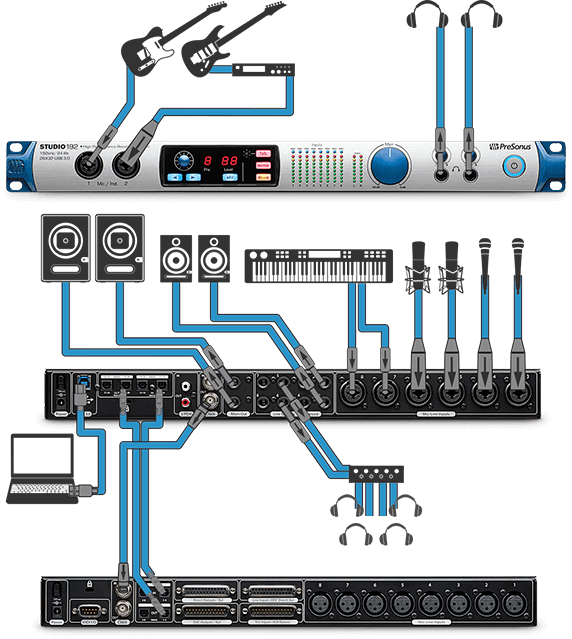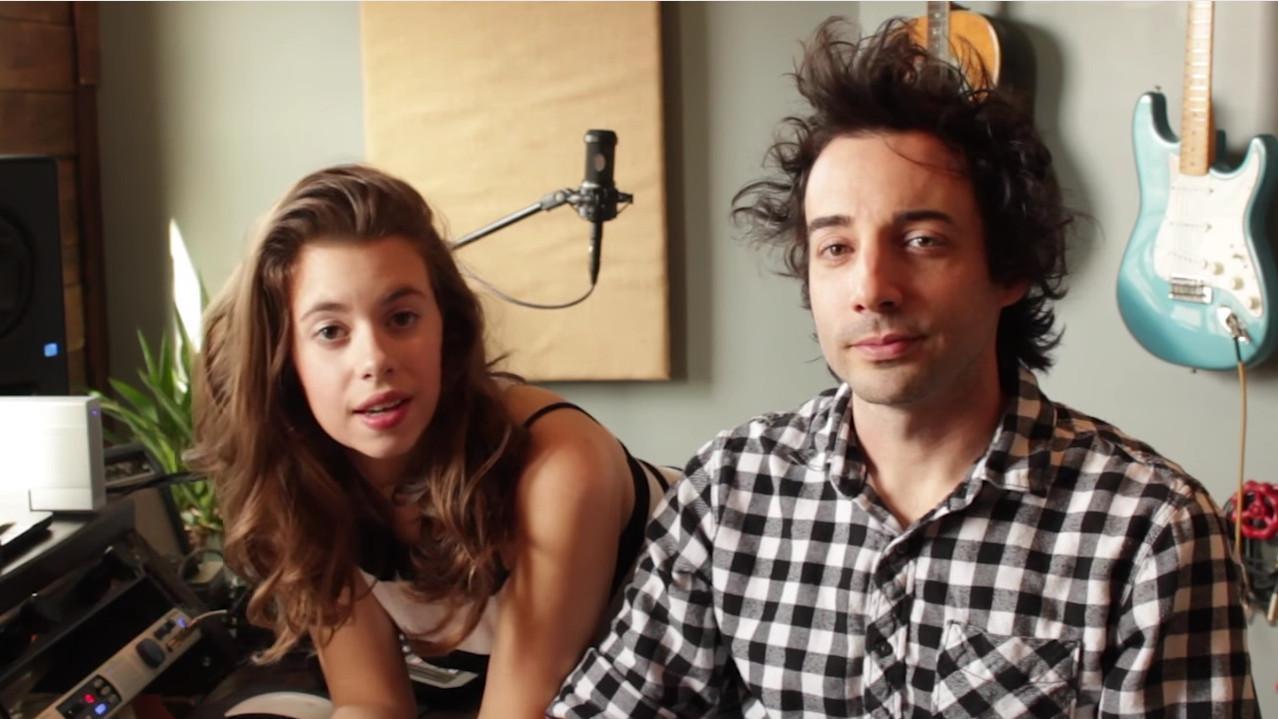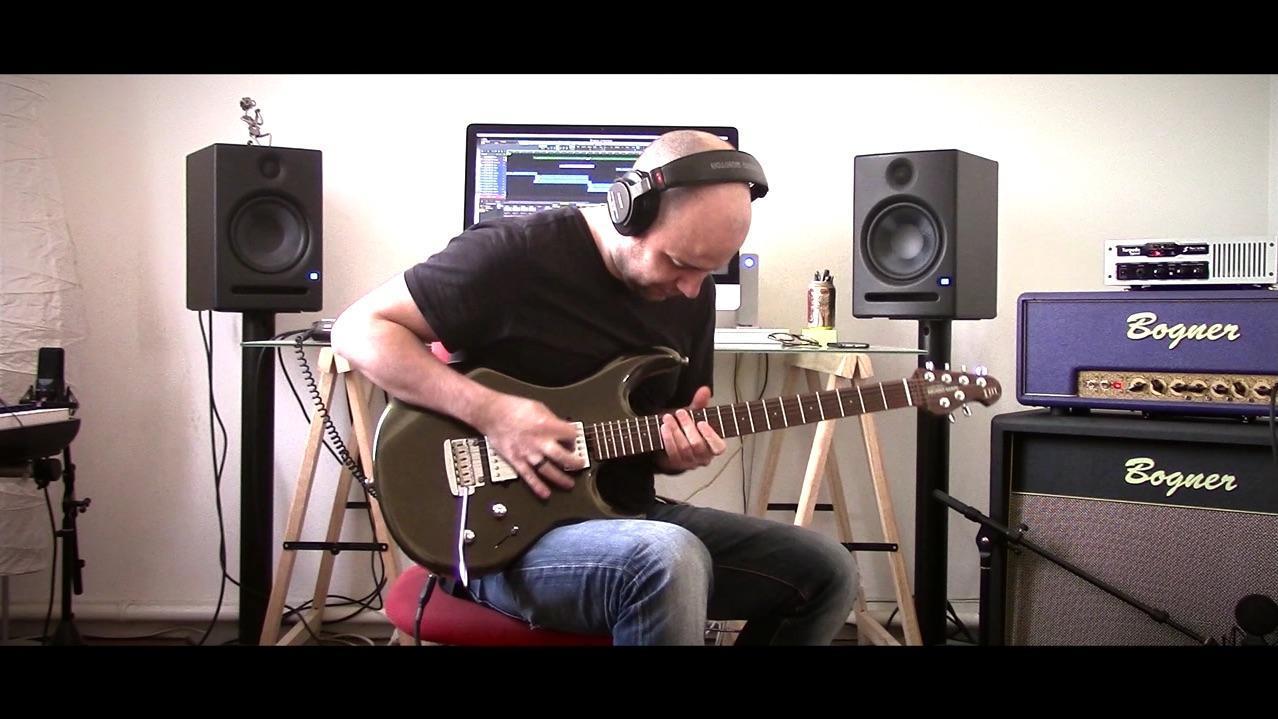This product has been discontinued.


Built to Create.
The PreSonus® Studio 192 USB 3.0 audio interface delivers exceptional sonic fidelity, flexible connectivity, and professional monitoring and mixing controls in a single rack space. Whether you’re a producer, an audio engineer, an independent band, a sound designer, or all of the above, your Studio 192 was built for you to create.
Your studio command center.
The Studio 192 audio interface is designed to be the central hub for any project or professional studio. The onboard talkback mic can be routed to any mix. Onboard Dim and Mono options let you take control of your main mix. Listen to any mix from either headphone amp. Use the 10 balanced outputs for monitor mixing, speaker switching, or both, depending on how you work. With its flexible software and abundant I/O, the Studio 192 fits into any recording and production environment.
Superior sound.
Audiophile-grade digital converters, ultra-low jitter clocking, and recallable preamps add up to a superior recording and listening experience. The Studio 192 audio interface operates at up to 192 kHz for ultra-high-definition mixing and recording. High-quality Burr-Brown converters on every input and output provide 118 dB of dynamic range to capture complex musical harmonics smoothly and naturally with no audible distortion. And our recallable XMAX microphone preamps deliver incredibly high headroom, deep lows, smooth highs, and a rich overall sound so you’ll hear every breath, transient, and detail in your recordings.
The Studio One in Studio 192.
With the Studio 192 audio interface, your audio interface is an integrated extension of your recording environment. Launch Studio One®, and you’ll find full preamp control and monitor-mix functions integrated into your recording environment. Our hybrid Fat Channel plug-in runs on the Studio 192’s DSP and in Studio One on your computer so you can record and monitor with Studio 192-based processing and seamlessly switch to the Studio One Fat Channel for playback. Need to track away from your computer? Launch Studio One Remote on your iPad® or Android™ tablet.
Remote control with UC Surface, too!
The Studio 192’s onboard features can also be controlled in PreSonus’ free UC Surface control software, so even if you use third-party recording software, you can remotely access them. UC Surface has rapidly won accolades for an intuitive mixing interface that provides quick access to everything you need to create quality monitor mixes.
Great signal processors are a PreSonus tradition.
Adding just the right amount of effects and processing to a monitor mix can make a huge difference in a musician’s ability to experience their performance naturally. To that end, the Studio 192 audio interface provides 16 instances of Studio One’s Fat Channel plug-in, one for every analog input and the first ADAT inputs, plus a stereo reverb and delay. The result is a better performance and a better recording.

Expandable when you need more I/O.
The Studio 192 audio interface has 18 digital inputs and outputs, allowing you to add more analog I/O when you need it. The DigiMax DP88 preamp/converter was designed to seamlessly extend the analog I/O on the Studio 192 with eight digitally-controlled XMAX preamps, ADAT I/O support up to 96 kHz, direct analog inputs, DAC outputs, and word clock I/O. Its mic preamps are fully remote-controllable from UC Surface, Studio One, and Studio One Remote when connected via ADAT Lightpipe to the Studio 192 so that they naturally extend your analog inputs both sonically and functionally.
Get your hands on a Studio 192.
The Studio 192 gives you a powerful combination audio interface and studio command center. With pristine audio up to 192 kHz, monitoring with DSP effects, remote-controllable preamps, monitor mixing, speaker switching, a headphone amp, and unprecedented Studio One integration, it gives you a portable recording solution like no other. Check it out at your favorite PreSonus® dealer.
Apple Silicon, iOS, and iPadOS compatibility—standard.
The PreSonus Studio 192 is natively compatible with Apple Silicon-based Mac computers*, as well as iOS and iPadOS devices, including iPad Pro, iPad, iPad Air, iPad Mini, iPod Touch, and iPhone. Because it's USB class-compliant, there are no special drivers or applications to download and install. You'll be able to produce on the go—everything from podcasts to folk rock to trap—wherever sound takes you.
For more on iOS/iPadOS compatibility, click here.
*Universal Control 3.4.2 or later is required for Native Apple Silicon compatibility.
Make your own magic.
At PreSonus, we want to make sure that our audio interfaces come with everything you need to craft your own mesmerizing spells in the studio. That’s why we include Studio One Artist with every audio interface product we make. But here in Louisiana, we have a word: lagniappe. It means "a little something extra," and it’s in that spirit that we also include the Studio Magic Suite of software with our audio interface products.
The 2020 Studio Magic is a major step up from the 2019 edition, and includes Ableton Live Lite, tutorials from Melodics, 6 virtual instruments, and 9 effects plug-ins in VST, AU, and AAX formats... all unlocked for use inside Studio One Artist with a retail value of over $1000 (US).
Content and terms of the Studio Magic Plug-in Suite are subject to change.
PreSonus has unleashed their Studio 192 USB audio interface, which on its own is great. But, paired with their DigiMax DP88 8-channel mic pre add-on, it offers up an expansion of tracks without any hassle.
Chris Devine, Performer Magazine
... one of the most straightforward interfacing experiences I have had.
Andy Jones, MusicTech




























